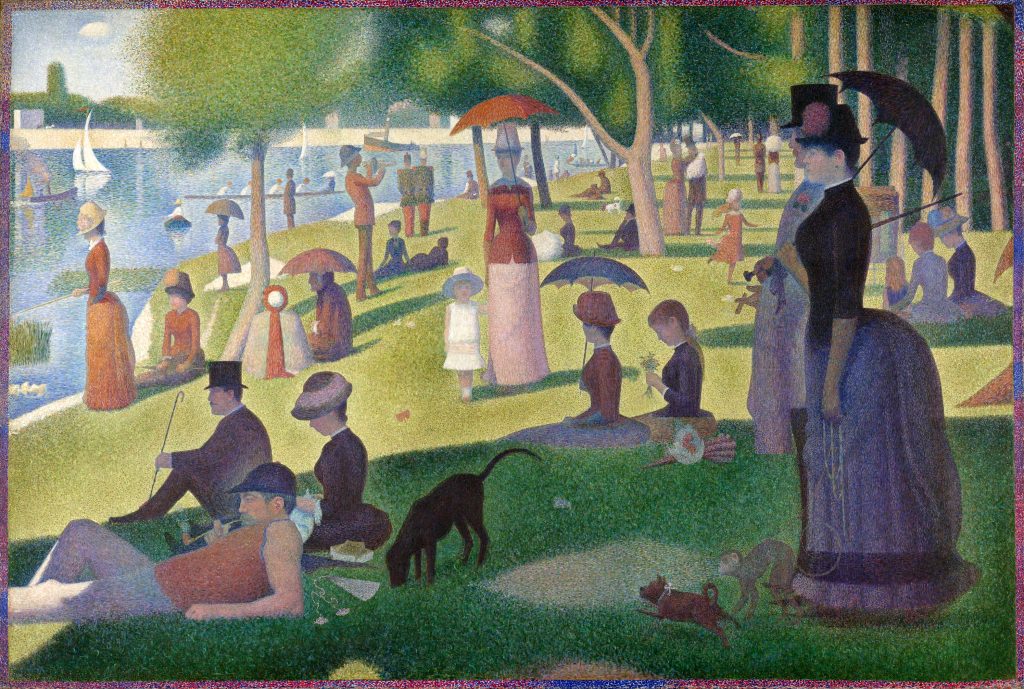Advanced Placement Art History is not a course for the faint of heart, or for those who do not enjoy studying. The material covered is extensive, ranging from prehistoric art to modern-day pieces. Fortunately, starting this year, the College Board narrowed the required number of works down to 250. Right off the bat, students are taught how to identify the four main components of art history: form (physical qualities), content (identifiable features within the piece), function (what the work was used for), and context (what was happening during the time the work was made). This information is then used to gain as much insight into the 250 works as possible to prepare for the AP exam in May. However, the material delves into other works too, in order to form a deeper understanding of the history and culture of the time periods they were made in. Ms. Conforth, who teaches the course, says that the goal of learning material both within and outside the set “is for students to be able to recognize the same overarching themes when presented with works of art outside the image set, through similar features of tradition” and “contextual references.” For example, the Guggenheim Museum in New York is used to supplement the Guggenheim Museum in Bilbao, Spain, to draw both a cultural and artistic comparison between them. Despite both having been commissioned by Solomon R. Guggenheim, they are architecturally unique and are situated in different parts of the world.
The class, held in the TV studio, often starts the period with a “Morning Masterpiece,” in which the students are shown a work they have been studying and write as much as they can about it. The students’ research is aided by the Art History site of Khan Academy as well as the lengthy Art History textbook by Marilyn Stokstad. From this information, they are asked to create note packets containing a brief description of form, content, context, and function, new words they learned from their research, and a brief summary on a select piece. The note packets are organized by unit, each one with a different theme like “The Natural World”, including works such as the Great Pyramids of Egypt, and “Sacred Spaces”, containing the Notre Dame cathedral at Chartres, France. In order to fully get a sense of each work’s place in the vast history of the world, students make their own flashcards, listing as much information as they can on the space the cards allow them, and sorting them into historical order. This helps students understand the time period, location, and individuals that were essential to the creation of each work of art.
The class also takes advantage of Ridgewood’s proximity to New York City, going on trips to the Metropolitan Museum of Art, adding another dimension to the understanding of the works covered. Prior to the most recent trip, students did extensive research on the pieces located there and then applied this knowledge to identify and understand the art from their visit.
The art itself is not the sole main component of the Art History AP curriculum. “We’re dealing with art criticism, world history, philosophy, mythology, and of course English,” comments Ms. Conforth. “Students are also learning a whole new vocabulary of art terms that they need to use when analyzing a work’s formal qualities.” The material and study as a whole creates a beneficial, educational experience for all parties involved. “I love teaching the course,” enthuses Ms. Conforth. “While it is demanding, it is such an exciting and interesting subject.” Students, too, are eager to learn more each day and work committedly. “I think for most students it’s tough getting comfortable with contributing to the daily discussions about the artworks, but they soon get over that. Art history students are hard working and insightful critical thinkers.”
In the end, the hard work and intensive learning does pay off. Students are well-prepared to take the exam in the spring by using the skills they learned throughout the year and come away with a profound understanding of art from all different cultures.
Victoria Murano
staff writer

